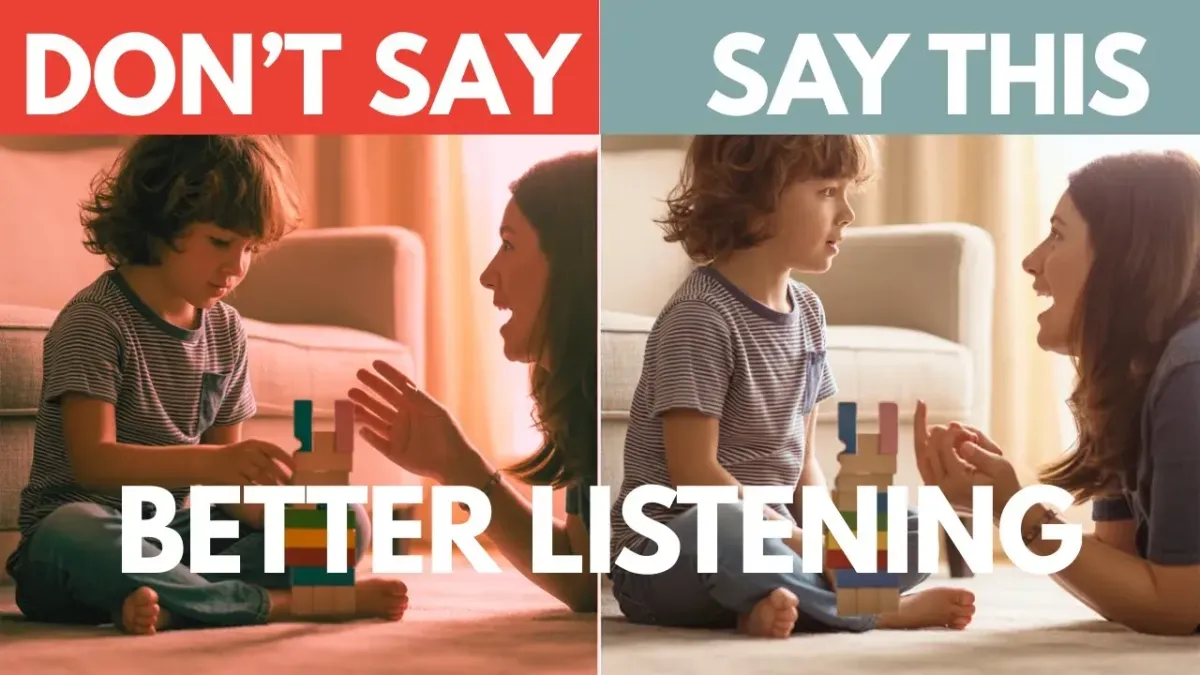
4 Communication Mistakes That Make Kids Ignore You (And How to Fix Them)


Ever asked your child to “come here” and they ran the other way laughing?
If so, you’re not alone and you’re definitely not failing as a parent.
The truth is, most kids ignore instructions not because they’re defiant, but because of how we unintentionally phrase those instructions. The good news? A few small shifts in your communication can lead to major changes in how well your child listens.
Let’s break down the 4 most common communication mistakes parents make and what to say instead.
1. Framing Commands as Questions
You say: “Can you come here, please?”
They hear: “Do you want to come here?”
And then they laugh and run the other way.
If the answer can’t be no, don’t ask it like a question.
Try instead:
“Walk to the kitchen now.” (Use a calm tone and a hand gesture.)
Other examples:
“Should we brush teeth now?” → “Time to brush teeth.”
“Would you like to put your shoes on?” → “Shoes on, please.”
This simple shift helps kids understand: this is happening.
2. Telling Kids What Not to Do
Saying “Stop yelling” or “Don’t hit” leaves your child’s brain doing guesswork, what should they do instead?
Instead, give one clear, positive action:
“Use your inside voice.”
“Gentle hands.”
“Walk, please.”
“Keep the ball on the ground.”
Clarity = faster action (and fewer meltdowns).
3. Yelling Across the House
You’re in the kitchen. Your child’s watching TV in the living room.
You yell: “Come set the table!”
Crickets.
Why? Their brain cannot tune in while locked into screen stimulation.
Instead:
✅ Walk over
✅ Get to their eye level
✅ Make gentle physical contact (hand on shoulder)
✅ Wait for eye contact
Then say: “Time to set the table.”
Yes, it takes longer but repeating yourself 17 times takes even longer.
4. Using Too Many Words
We often bury the command inside a sea of explanations:
❌ “Sweetie, I know you’re playing but the bus is coming in 20 minutes and—”
They tune out.
Instead:
✅ “Time to get dressed. The bus comes in 20 minutes.”
Children remember the beginning and end of what we say, the rest gets lost.
Try This Today:
Shift “Can you…?” to “It’s time to…”
Turn “Don’t…” into “Do…”
Close the distance and make eye contact
Use short, clear commands
These small shifts change everything.
And if you’re ready to go beyond communication and learn my full 5C’s Framework for calm, confident parenting, I’m hosting a free live workshop:
🗓️ From Chaos to Calm
📍 https://drlindsayemmerson.com/calm
🎥 Thursday, November 20 @ 4PM Pacific / 7PM Eastern
Come join me, we’ll talk strategy, quick wins, and how to reduce power struggles without yelling, guilt, or giving in.
Want more tools like this? Check out the Better Behavior Blueprint for step-by-step support in creating a calm, connected, and respectful home without yelling, threats, or giving in.
